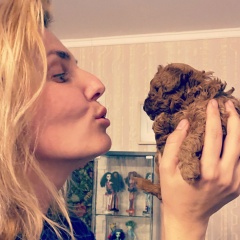Есть у Александра Кушнера замечательное стихотворение "Воспоминания" о петроградской молодежи весны 1917 года...
http://biblioteka-poeta.ru/vospominaniya/kushner-a-s
И вот смотрю я на эти две фотокарточки и вспоминается это стихотворение... Две фотографии... Самая заря жизни (1898 г.), с ее обещаниями и надеждами, и последняя, снятая уже в тюрьме НКВД в 1937 году... Две фотографии и целая жизнь между ними, в которой как в капле воды отразилась эпоха российских революций и террора...
Вячеслав Иванович Яновицкий, один из героев моей диссеры. Сын поляка, сосланного в Сибирь после восстания 1863 года. Окончил Иркутское училище в 1898 году (тогда и была сделана первая фотография) и поступил в Петербургский Технологический институт. Увлекся революционными социал-демократическими идеями и в годы Первой русской революции даже возглавил радикальный Совет старост института. 1 января 1907 г., отмечая в кругу земляков Новый год, был арестован полицией. Дворник донес в полицейский участок о подозрительном сборище студентов. В то время по столице прокатилась череда громких эсеровских терактов и полиция искала боевку, совершившую их. К несчастью для студентов и курсисток, мирно и весело отмечавших под гитару праздник, в компании оказался дезертир-фельдшер, живший в соседней комнате и тоже приглашенный к столу. Когда в квартиру начал стучаться наряд полиции, он стремительно отреагировал на приход "фараонов" и начал стрелять по дверям из своего маузера... ошарашенная молодежь попряталась под столом, а маузеристу в конце концов пришлось застрелиться, дабы не сдаваться властям. Всем арестованным на этой квартире грозил военно-полевой суд и началась настоящая кампания в вузах, прессе и даже во II Государственной думе по спасению Яновицкого и его друзей по несчастью. В конце концов, военный окружной суд при участии адвокатов оправдал всех бывших на той квартире... спасенный от расстрела Яновицкий закончил институт, отслужил в армии, переехал на работу в Москву. В 1921-1930 годах работал в МОГЭС. В 1930 г. Яновицкий проходил по делу "низовой террористической ячейки в МОГЭСе" в рамках процесса Промпартии. Оправдан. В феврале 1937 года арестован. Осужден 14 сентября 1937 года Военной коллегией Верховного Суда СССР по обвинению в «участии в троцкистской террористической организации». Расстрелян 14 сентября 1937 года. Реабилитирован 29 августа 1956 года Военной коллегией Верховного Суда СССР.
Две фотографии и целая жизнь.
http://biblioteka-poeta.ru/vospominaniya/kushner-a-s
И вот смотрю я на эти две фотокарточки и вспоминается это стихотворение... Две фотографии... Самая заря жизни (1898 г.), с ее обещаниями и надеждами, и последняя, снятая уже в тюрьме НКВД в 1937 году... Две фотографии и целая жизнь между ними, в которой как в капле воды отразилась эпоха российских революций и террора...
Вячеслав Иванович Яновицкий, один из героев моей диссеры. Сын поляка, сосланного в Сибирь после восстания 1863 года. Окончил Иркутское училище в 1898 году (тогда и была сделана первая фотография) и поступил в Петербургский Технологический институт. Увлекся революционными социал-демократическими идеями и в годы Первой русской революции даже возглавил радикальный Совет старост института. 1 января 1907 г., отмечая в кругу земляков Новый год, был арестован полицией. Дворник донес в полицейский участок о подозрительном сборище студентов. В то время по столице прокатилась череда громких эсеровских терактов и полиция искала боевку, совершившую их. К несчастью для студентов и курсисток, мирно и весело отмечавших под гитару праздник, в компании оказался дезертир-фельдшер, живший в соседней комнате и тоже приглашенный к столу. Когда в квартиру начал стучаться наряд полиции, он стремительно отреагировал на приход "фараонов" и начал стрелять по дверям из своего маузера... ошарашенная молодежь попряталась под столом, а маузеристу в конце концов пришлось застрелиться, дабы не сдаваться властям. Всем арестованным на этой квартире грозил военно-полевой суд и началась настоящая кампания в вузах, прессе и даже во II Государственной думе по спасению Яновицкого и его друзей по несчастью. В конце концов, военный окружной суд при участии адвокатов оправдал всех бывших на той квартире... спасенный от расстрела Яновицкий закончил институт, отслужил в армии, переехал на работу в Москву. В 1921-1930 годах работал в МОГЭС. В 1930 г. Яновицкий проходил по делу "низовой террористической ячейки в МОГЭСе" в рамках процесса Промпартии. Оправдан. В феврале 1937 года арестован. Осужден 14 сентября 1937 года Военной коллегией Верховного Суда СССР по обвинению в «участии в троцкистской террористической организации». Расстрелян 14 сентября 1937 года. Реабилитирован 29 августа 1956 года Военной коллегией Верховного Суда СССР.
Две фотографии и целая жизнь.
Alexander Kushner has a wonderful poem "Memoirs" of Petrograd youth in the spring of 1917 ...
http://biblioteka-poeta.ru/vospominaniya/kushner-a-s
And now I look at these two photographs and this poem comes to mind ... Two photographs ... The very dawn of life (1898), with its promises and hopes, and the last, taken already in the NKVD prison in 1937 ... Two photographs and the whole life between them, in which, as in a drop of water, the era of Russian revolutions and terror was reflected ...
Vyacheslav Ivanovich Yanovitsky, one of the heroes of my dissertation. The son of a Pole, exiled to Siberia after the uprising of 1863. He graduated from the Irkutsk College in 1898 (then the first photograph was taken) and entered the St. Petersburg Technological Institute. He was carried away by revolutionary social-democratic ideas and even headed the radical Council of the Institute’s elders during the First Russian Revolution. January 1, 1907, celebrating New Year among fellow countrymen, was arrested by the police. The janitor reported to the police station about a suspicious bunch of students. At that time, a series of high-profile Socialist-Revolutionary terrorist attacks swept through the capital and the police were looking for the combat action that had committed them. Unfortunately for students and female students, who peacefully and cheerfully celebrated their holiday with a guitar, the company turned out to be a medical assistant-deserter who lived in the next room and was also invited to the table. When a police outfit began to knock on the apartment, he promptly reacted to the arrival of the “pharaohs” and started firing on the doors of his Mauser ... the stunned youth hid under the table, and the Mauserist eventually had to shoot himself so as not to give up to the authorities. Everyone arrested in this apartment was threatened by a military court and a real campaign began in universities, the press, and even in the Second State Duma to rescue Yanovitsky and his friends in misfortune. In the end, the military district court, with the participation of lawyers, acquitted all those who were in that apartment ... saved from execution, Yanovitsky graduated from the institute, served in the army, and moved to work in Moscow. In 1921-1930 he worked at the MOGES. In 1930, Yanovitsky was involved in the case of a “grassroots terrorist cell in the MOGES” as part of the Industrial Party process. Justified. In February 1937 he was arrested. Convicted on September 14, 1937 by the Military Collegium of the Supreme Court of the USSR on charges of "participation in a Trotskyist terrorist organization." Shot on September 14, 1937. Rehabilitated on August 29, 1956 by the Military Collegium of the Supreme Court of the USSR.
Two photos and a lifetime.
http://biblioteka-poeta.ru/vospominaniya/kushner-a-s
And now I look at these two photographs and this poem comes to mind ... Two photographs ... The very dawn of life (1898), with its promises and hopes, and the last, taken already in the NKVD prison in 1937 ... Two photographs and the whole life between them, in which, as in a drop of water, the era of Russian revolutions and terror was reflected ...
Vyacheslav Ivanovich Yanovitsky, one of the heroes of my dissertation. The son of a Pole, exiled to Siberia after the uprising of 1863. He graduated from the Irkutsk College in 1898 (then the first photograph was taken) and entered the St. Petersburg Technological Institute. He was carried away by revolutionary social-democratic ideas and even headed the radical Council of the Institute’s elders during the First Russian Revolution. January 1, 1907, celebrating New Year among fellow countrymen, was arrested by the police. The janitor reported to the police station about a suspicious bunch of students. At that time, a series of high-profile Socialist-Revolutionary terrorist attacks swept through the capital and the police were looking for the combat action that had committed them. Unfortunately for students and female students, who peacefully and cheerfully celebrated their holiday with a guitar, the company turned out to be a medical assistant-deserter who lived in the next room and was also invited to the table. When a police outfit began to knock on the apartment, he promptly reacted to the arrival of the “pharaohs” and started firing on the doors of his Mauser ... the stunned youth hid under the table, and the Mauserist eventually had to shoot himself so as not to give up to the authorities. Everyone arrested in this apartment was threatened by a military court and a real campaign began in universities, the press, and even in the Second State Duma to rescue Yanovitsky and his friends in misfortune. In the end, the military district court, with the participation of lawyers, acquitted all those who were in that apartment ... saved from execution, Yanovitsky graduated from the institute, served in the army, and moved to work in Moscow. In 1921-1930 he worked at the MOGES. In 1930, Yanovitsky was involved in the case of a “grassroots terrorist cell in the MOGES” as part of the Industrial Party process. Justified. In February 1937 he was arrested. Convicted on September 14, 1937 by the Military Collegium of the Supreme Court of the USSR on charges of "participation in a Trotskyist terrorist organization." Shot on September 14, 1937. Rehabilitated on August 29, 1956 by the Military Collegium of the Supreme Court of the USSR.
Two photos and a lifetime.


У записи 4 лайков,
0 репостов.
0 репостов.
Эту запись оставил(а) на своей стене Константин Макаров

























